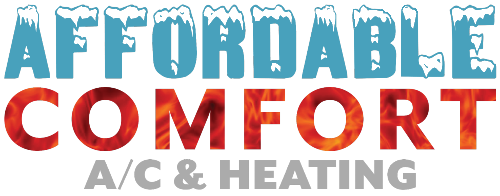Common HVAC Problems: Identifying and Fixing Them
HVAC systems can experience problems over time. Homeowners must identify and promptly fix these issues to certify the efficient operation of their HVAC system and avoid further complications.
Heating, ventilation, and air conditioning (HVAC) systems are fundamental for maintaining a comfortable indoor environment. However, like any alternative mechanical system, HVAC systems can experience problems over time. Homeowners must identify and promptly fix these issues to certify the efficient operation of their HVAC system and avoid further complications. This blog post will delve into common HVAC problems, discuss how to identify them and provide practical steps to resolve them.
Inadequate Heating or Cooling
One of the most prevalent HVAC problems is inadequate heating or cooling. When an HVAC system fails to provide the desired comfort level, it can lead to discomfort and energy inefficiency. Here are some potential causes and solutions:
Insufficient Airflow: Dirty or clogged air filters can restrict airflow, reducing the system's capacity to heat or cool effectively. Homeowners should prioritize cleaning or replacing air filters every one to three months.
Thermostat Issues: Incorrect thermostat settings can hinder the HVAC system from accurately regulating temperature. Replacing a faulty thermostat may be necessary.
Ductwork Problems: Leaks, obstructions, or poor insulation in the ductwork can impede proper airflow and heat transfer. To address this issue, residents should inspect the ductwork for leaks, obstructions, or signs of poor insulation. Sealing leaks and improving insulation can significantly improve the system's performance.
Noisy Operation
Unusual noises emanating from an HVAC system should not be ignored, as they often indicate underlying problems that require attention. Here are some common causes and solutions for noisy HVAC systems:
Loose or Faulty Parts: Loose screws or faulty components within the HVAC system can produce rattling, banging, or squealing noises. Homeowners should inspect the system, tighten any loose screws, and replace faulty parts as necessary.
Clogged Air Filters: Restricted airflow caused by clogged air filters can result in whistling or hissing sounds. Cleaning or replacing air filters will help restore proper airflow and reduce noise.
Fan Motor Issues: A malfunctioning fan motor can create buzzing or humming sounds. Homeowners should check the fan motor for any problems and replace it if necessary.
Uneven Temperature Distribution
Uneven temperature distribution within a living space is a frequent issue that can lead to discomfort. Several factors can cause this problem, including:
Blocked Vents: It is essential to verify that all vents and registers are open and not obstructed by furniture, curtains, or other objects. Obstructed vents restrict airflow and result in uneven temperature distribution.
Ductwork Imbalance: Homeowners should inspect their ductwork for imbalances or blockages that may be causing uneven airflow and temperature distribution. An HVAC professional may be necessary to assess and rebalance the ductwork.
Poor Insulation: Insufficient insulation in certain areas can contribute to temperature variations. Adequate insulation throughout the home will help maintain consistent temperatures.
Frequent Cycling On and Off
Frequent cycling on and off of the HVAC system can generate increased energy consumption and unnecessary strain on the system. Here are common causes and solutions for this issue:
Improperly Sized System: An oversized HVAC system frequently cycles on and off as it rapidly reaches the desired temperature. Consulting an HVAC professional to assess and resize the system can help prevent this issue if necessary.
Dirty Condenser Coils: Dirty condenser coils reduce heat exchange efficiency, leading to frequent cycling. Regularly cleaning the condenser coils will help maintain their efficiency.
Thermostat Issues: A malfunctioning thermostat can provide inaccurate temperature readings, resulting in frequent cycling. Replacing the thermostat may be a suitable solution.
High Energy Consumption
Unusually high energy bills can indicate HVAC system inefficiencies. To address this issue, homeowners can consider the following causes and solutions:
Poor Insulation: Inadequate insulation in walls, windows, and the roof can cause heat loss or gain, forcing the HVAC system to work more to maintain desired temperatures. Improving insulation throughout the home will help reduce energy consumption.
Clogged Air Filters or Dirty Coils: Clogged air filters and contaminated condenser or evaporator coils can reduce the system's efficiency, leading to higher energy consumption. Regularly cleaning or replacing air filters and scheduling coil cleanings following the manufacturer's recommendations are indispensable.
Aging or Inefficient Equipment: Older or inefficient HVAC systems often consume more energy to provide the desired heating or cooling. Upgrading to an energy-efficient system can significantly lower energy consumption.
Conclusion
Identifying and resolving common HVAC problems are vital for maintaining a comfortable indoor environment and guaranteeing energy efficiency. In this blog post, we discussed common issues such as inadequate heating or cooling, noisy operation, uneven temperature distribution, repeated cycling on and off, and high energy consumption. By knowing the causes and implementing the recommended solutions, homeowners can address these problems and verify the efficient operation of their HVAC systems. However, for more complex issues or if uncertain about the problem, it is always advisable to seek professional help from an experienced HVAC technician.
Trust locally-owned and operated Affordable Comfort A/C and Heating for HVAC preventative maintenance and thermostat services. Call 602-574-1205 to schedule a consultation.

